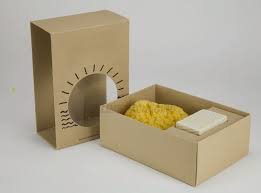
Finding the Best FD Rates in India – A Complete Guide
The habit of saving money isn’t something one can master overnight; it’s a long process that takes a lot of discipline. Thanks to the various useful investment instruments banks and other financial institutions offer, building the habit of saving money is now easier than ever. In India, FDs have been a prevalent choice for investment for decades, as they tick all the boxes regarding safety and stability. With an FD, the invested funds stay in safe hands, and customers can also earn great interest rates regardless of the volatile market situation. So, if you are new to this concept and want to start saving money in the best way possible, you have come to the right place. Consider this article your ultimate guide to finding the best FD rates in India. Fixed Deposits – Concept, Benefits, and More A Fixed Deposit is a deposit where a certain amount of funds is locked for a fixed time. The best part is that the person can not only choose the tenure of the deposit but also earn a handsome interest rate from their funds monthly. At the end of the term, the investor receives the principal amount they have invested along with the maturity interest. FD is a wonderful investment tool for people of all age groups, especially beginners, because there is no market risk involved. Besides that, here are some more benefits that come along with an FD: ●Tax Savings: You can pick 5-year tax-saver Fixed Deposits for tax savings and receive Section 80C deductions. ●Compounding Interest: If you opt out of regular payouts and instead reinvest your interest income, compounding interest will enable you to build up a sizable corpus when the investment matures. ●All-Around Security: Returns from FDs are safe and guaranteed. Despite changes in the market, you will get your returns as promised by your bank throughout the tenure of your deposit. Concerning Fixed Deposits, there are no links to market volatility. ●Attractive Interest Rate: The rate of interest offered for FDs is significantly higher than most other investment tools provided by financial institutions. Many banks offer higher interest rates to senior citizens to make their lives more financially secure post- retirement. Factors that Impact FD Interest Rates Even if you start by investing a small amount in FD, knowing which factors will make things work out is the key to a successful financial future. Here are the factors to consider before investing in an FD: ●Repo Rate The repo rate is one of the main factors influencing interest rates on Fixed Deposits. The Reserve Bank of India (RBI) determines the repo rate, which is the fee the RBI assesses on loans to India’s commercial banks. Banks look to the current repo rate for guidance in determining FD interest rates. Investors can monitor changes in repo rates for the best opportunity to invest in an FD plan and maximise returns. ●Investor’s Age As previously discussed, many banks offer a higher interest rate to senior citizens than those under 60. For example, if a bank generally provides 7% interest per annum on FDs, a senior citizen will likely get 0.5% more interest. ●Tenure The deposit duration should be considered when choosing the most suitable FD plan with the highest interest rate. The tenure, or duration, of the FD, can last between a few months and several years. However, it also means that the funds will remain longer. A longer tenure commonly signifies higher rates of interest. Make sure to pick a tenure that best fits your financial goals. Consider using an FD interest calculator to understand which plan will work best for you. This way, you will not only get an accurate estimation but also be able to compare multiple options at the same time. ●Principal Amount If you invest more in an FD, you will have a higher interest rate. This means your returns will be more substantial than investing a smaller amount. With a higher investment, you may also have the opportunity to negotiate better terms or benefits from the financial …





